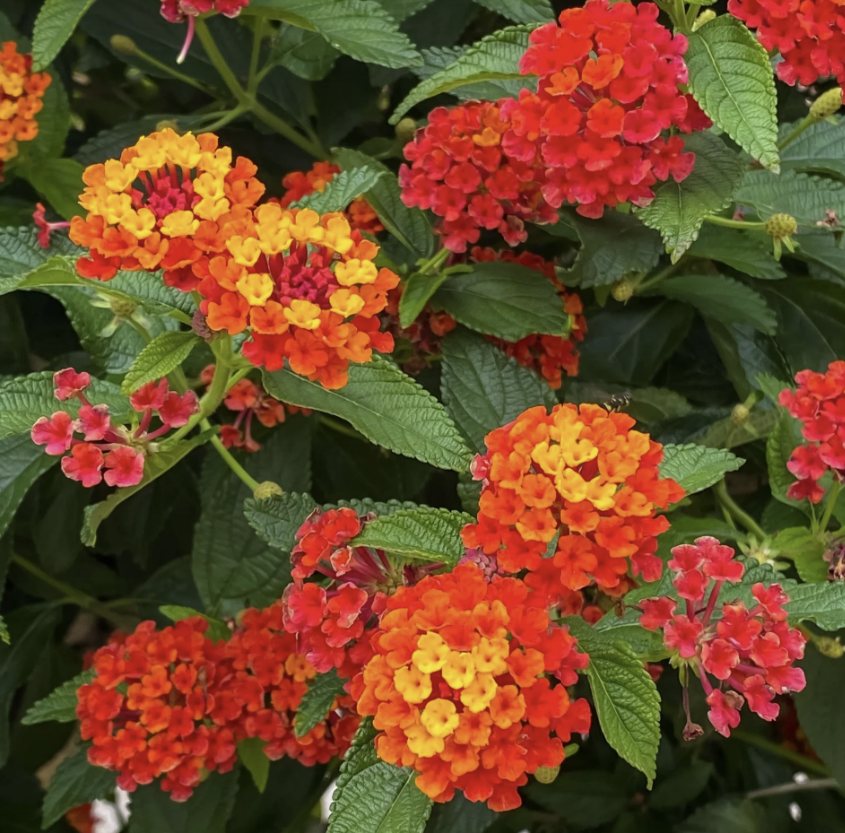Species Profile: Radiant Lantana
Common Name: Radiant Lantana (bi-color native lantana)
Scientific Name: Lantana urticoides (bi-color cultivar)
Location: Native to Texas and northern Mexico, thriving in prairies, rocky slopes, open fields, and roadside habitats. Widely planted in Central Texas for ornamental use and pollinator support.
Mating Habits: Reproduces by seed and vegetative growth. Flowers are pollinated by butterflies, bees, and occasionally hummingbirds.
Seasonal Habits / Bloom Time: Blooms from spring through late fall (April to November), with peak flowering during the hot summer months. Flowers persist into fall, supporting late-season pollinators.
Ecological Relevance: A valuable nectar source for butterflies such as Monarch, Queen, Swallowtails, and Painted Lady. Also supports native bees and hummingbirds, while its berries provide food for birds.
Interesting Facts:
“Radiant” refers to the striking bi-color blooms, often a blend of red, orange, and yellow.
Extremely heat- and drought-tolerant, thriving in poor soils.
Long bloom season ensures continuous nectar availability.
Wildlife Associations: Highly attractive to a variety of butterflies and native bees. Hummingbirds feed on the tubular flowers, while songbirds, including mockingbirds and finches, consume the berries.
Conservation Note: Use native Lantana urticoides cultivars like Radiant Lantana instead of non-native lantana varieties to support local ecosystems and avoid invasive impacts.

